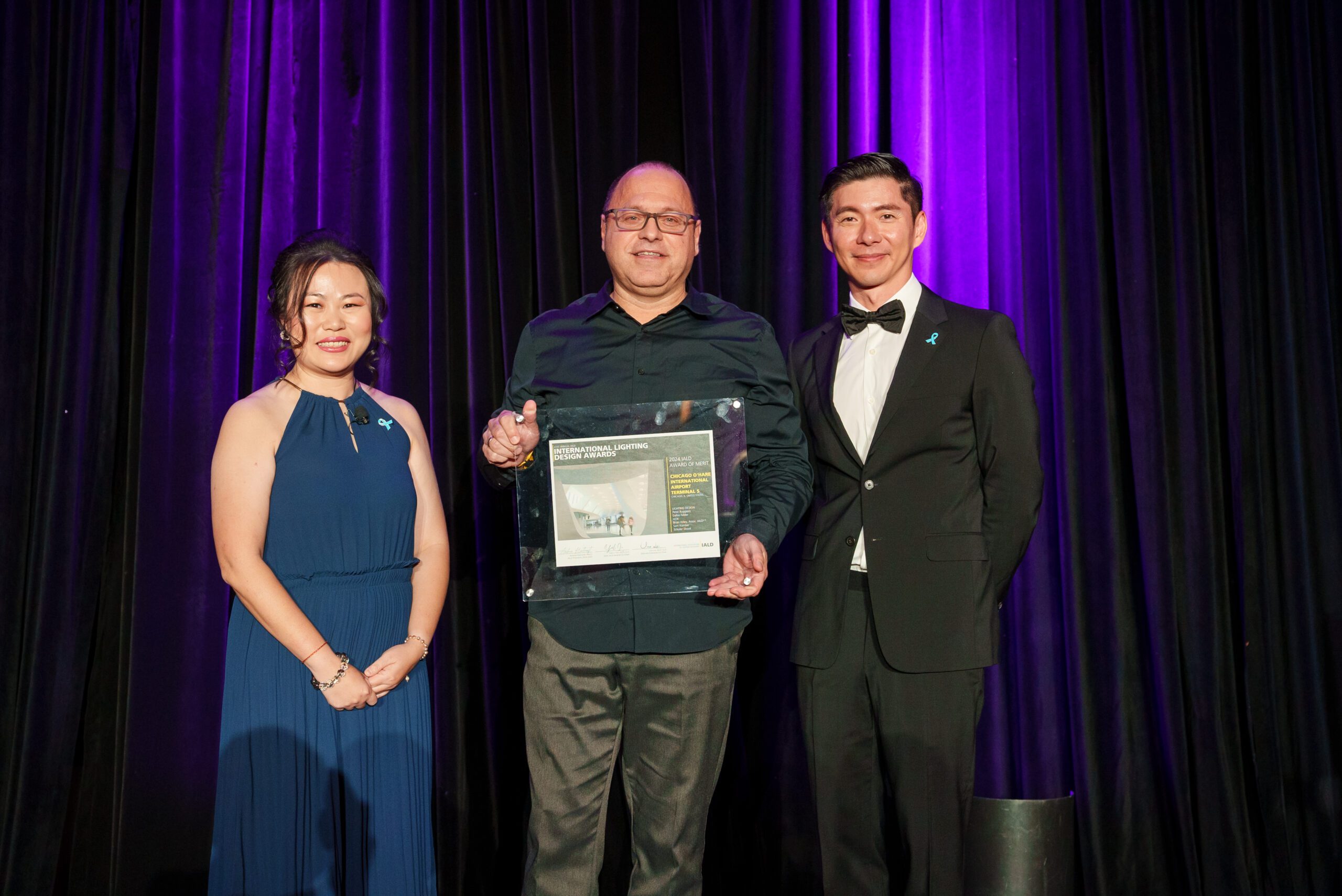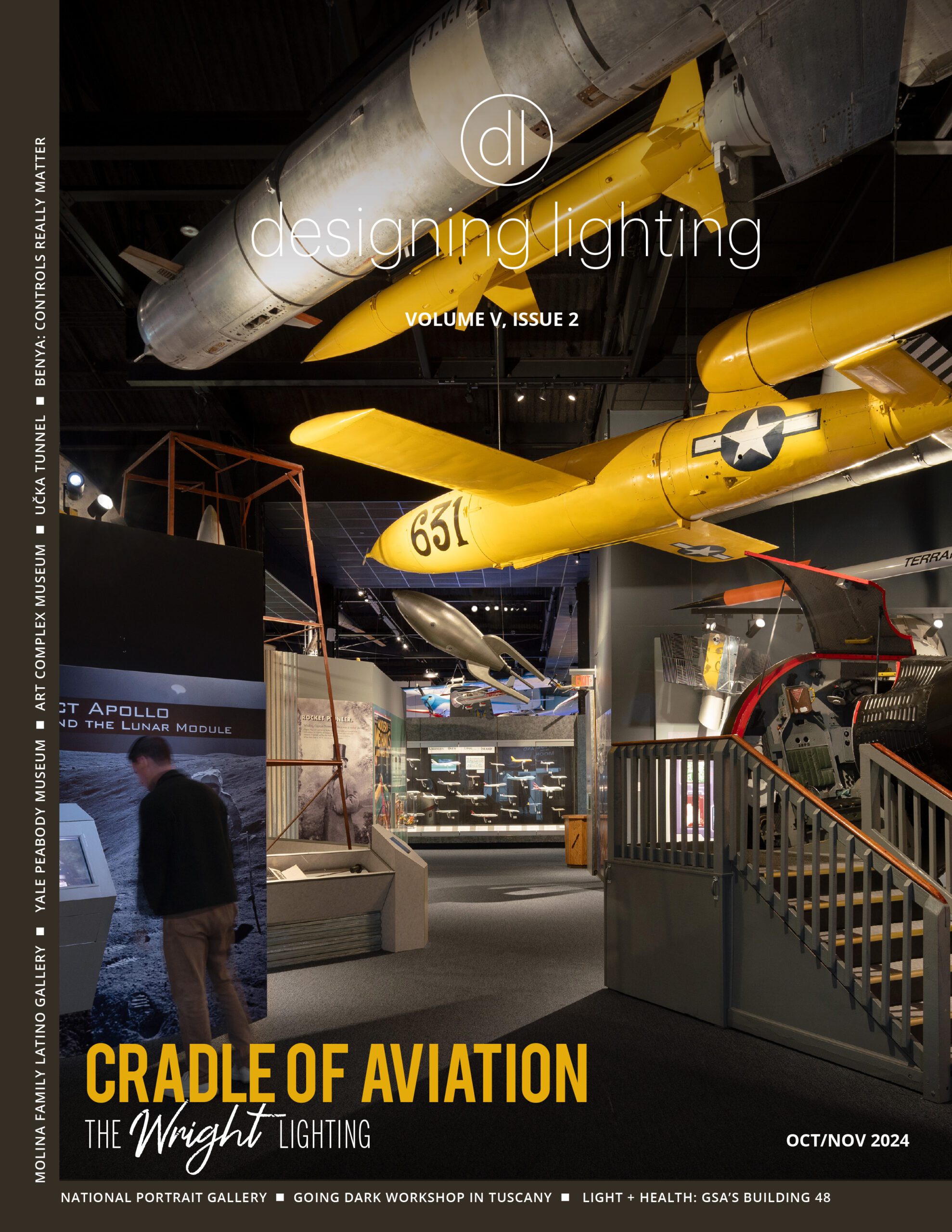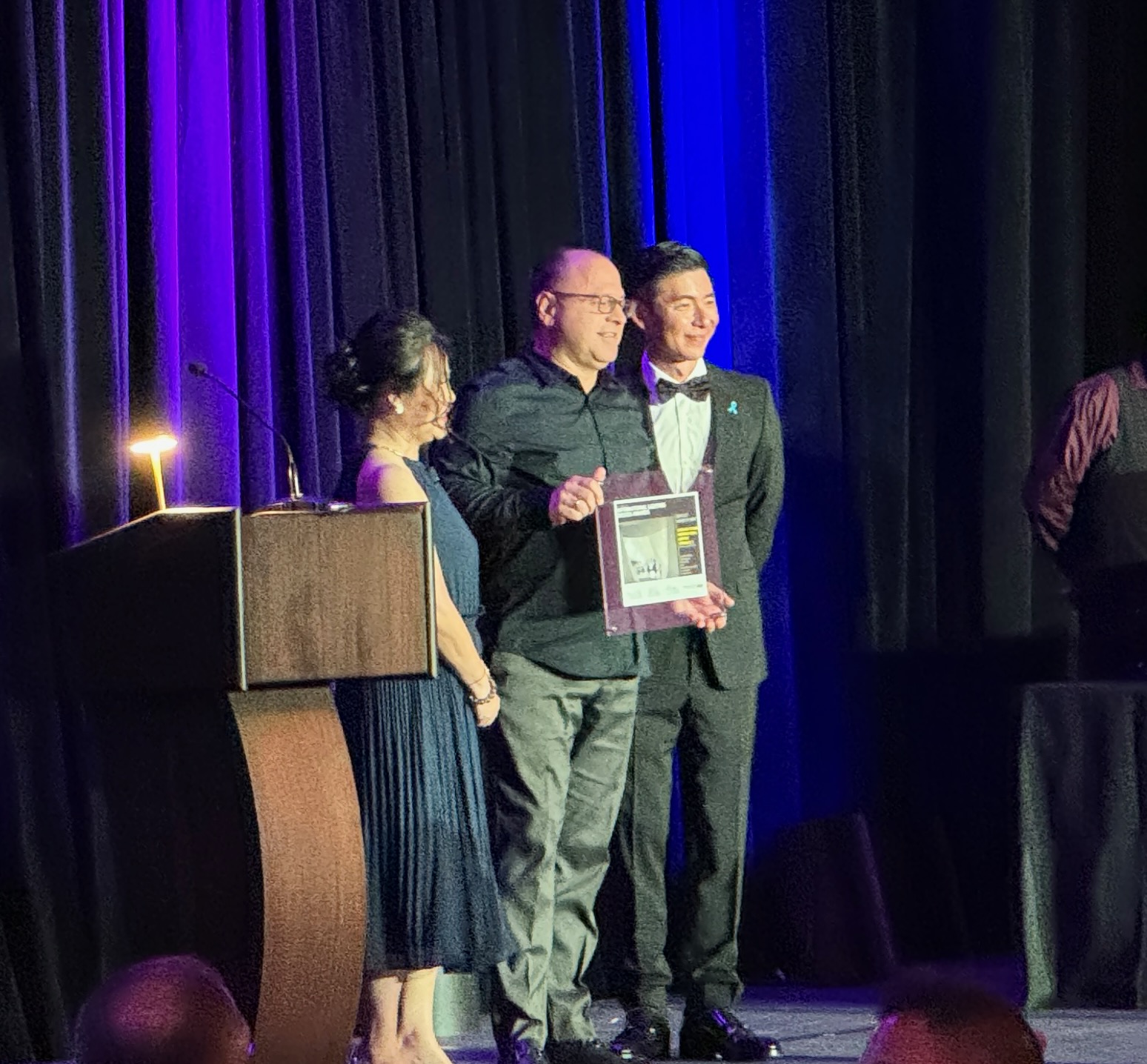At the IALD Enlighten Americas conference near San Diego, I had the chance to sit down with Giulio Pedota, IALD, LC, LEED AP of Schuler Shook, as his O’Hare Terminal T5 Design receives an Award of Merit. The project stands as a testament to the integration of architecture and innovative lighting, providing both functional and aesthetic improvements to the terminal. O’Hare Design Receives Award
The Challenge of Expanding Terminal 5
Giulio described the expansion of Terminal 5 as both necessary and highly sophisticated. “It’s an expansion of the existing terminal because of the high demand that the airports are feeling; they have to expand.” This project, designed by HOK Chicago, features a distinctive architectural design that required a thoughtful and precise lighting plan, especially for the departure terminal.

Giulio Pedota Receives an Award of Merit at the IALD Enlighten Americas Conference. Photo courtesy of IALD
Lighting the Iconic Domes
One of the standout features of Terminal 5 is its unique domed ceiling, which posed several challenges for Giulio and his team. “I don’t know exactly the amount of domes that are in the ceiling, but it’s got over 3,000 downlights that are installed adjacent to the domes.” These downlights not only provide general lighting but also create a strong visual impact within the terminal.
The downlights, with a diameter of six inches, are placed high up in the ceiling to effectively light the space. Giulio explained how they achieved this: “The biggest challenge was to get the domes illuminated correctly.” Each dome features an “eyelid” that conceals the fixtures, allowing for uniform illumination without visible sources. Achieving this required several mockups to ensure the right balance of light and shadow. “It was like three or four mockups that we had to do to achieve it,” he added.
Tunable White Lighting: A Missed Opportunity
Originally, the plan for Terminal 5’s lighting included a tunable white system to allow flexibility in lighting temperature. “The basis of design was a tunable white system,” Giulio explained. The tunable white system would have allowed for adjustments during the day, moving from cooler 3500K lighting during the day to warmer 3000K lighting at night. Unfortunately, budget constraints prevented the implementation of the tunable system, which would have increased the overall cost by 22%. “We had to kind of decide… do we want to go to 3500? The thought of living with 3500 at night didn’t appeal to us.” In the end, the team chose to stick with 3000K, which turned out to be a great decision. “It mixes well with daylight, and at night it looks really spectacular.”
Collaboration with Architects
The success of the project was also due to close collaboration with the architects from HOK Chicago. Giulio noted how essential it was to work hand-in-hand with the architects, especially when designing the domes. “The architect has to be involved with that. They know exactly what material to use to create the lip and how it has to taper on the angles.” This collaboration ensured the architectural vision was maintained while also meeting the technical lighting requirements.
A Final Product to be Proud Of
Despite the challenges, Giulio and his team are proud of the result, and the Chicago Department of Aviation (CDA) is pleased with the outcome as well. “Overall, we’re very happy with the results. The CDA is really happy with it.” The final product is not only visually stunning but also functional, providing optimal lighting for passengers and staff alike.
As the interview concluded, Giulio expressed his ongoing commitment to advancing lighting design and pushing for innovative solutions, such as tunable white lighting, in future projects.
Read about the Casals Forum Award of Merit by Licht Kunst Licht, AG




